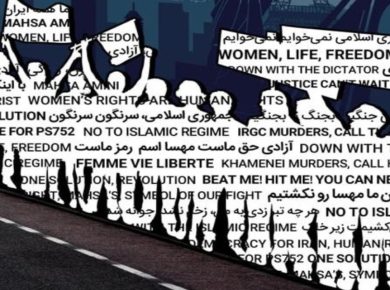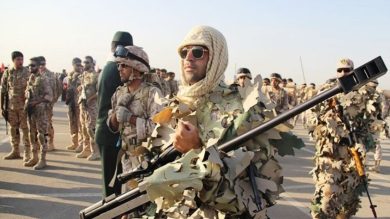Iranian women have long been at the forefront of the struggle for freedom, justice, and equality. Despite relentless repression, they refuse to be silenced—even from behind the cold, brutal walls of Iran’s notorious prisons. The Islamic Revolutionary Guard Corps (IRGC) has made imprisoning women activists, journalists, and human rights defenders a key tactic of control, using torture, forced confessions, and isolation to break their spirits.
But instead of crushing resistance, the IRGC’s repression has only strengthened the women’s movement, turning prisons like Evin and Qarchak into symbols of defiance. Women like Narges Mohammadi, Nasrin Sotoudeh, and Sepideh Gholian continue to challenge the regime from behind bars, proving that courage cannot be caged.
This article provides an update on the women imprisoned for their activism, their conditions inside Iran’s prisons, and how global solidarity can help amplify their voices and secure their freedom.
1. The IRGC’s War on Women’s Voices
A. Why the IRGC Targets Women Activists
The IRGC views women’s activism as an existential threat to the regime’s control. Women challenge:
• Compulsory hijab laws, a symbol of state control over their bodies.
• Legal and social discrimination, including restrictions on travel, divorce, and employment.
• Censorship and media control, exposing the regime’s brutality to the world.
By arresting and imprisoning female activists, the IRGC aims to:
• Deter others from speaking out.
• Cut off resistance leaders from their movements.
• Crush morale through psychological and physical torture.
Despite these efforts, Iranian women refuse to back down.
B. The Most Notorious Prisons for Women
The IRGC controls several key prisons where female political prisoners endure inhumane conditions:
1. Evin Prison (Tehran)
• Known as “Iran’s torture factory”, Evin holds many of Iran’s most prominent political prisoners.
• Women activists face solitary confinement, psychological torture, and denial of medical treatment.
• Surveillance and interrogations are constant, with women forced to make false confessions on state TV.
2. Qarchak Prison (Varamin)
• Dubbed “the worst women’s prison in Iran”, Qarchak is overcrowded, unsanitary, and violent.
• Political prisoners are mixed with violent criminals, exposing them to additional abuse.
• Women report sexual harassment, beatings, and food/water shortages as routine.
These prisons serve as centers of punishment and control, but also as centers of resistance, where women’s voices remain defiant.
2. Women Who Refuse to Be Silenced
A. Narges Mohammadi: A Nobel Laureate Behind Bars
• Activism: Human rights defender, Nobel Peace Prize winner, campaigner against the death penalty.
• Current Status: Serving multiple prison sentences in Evin Prison for her activism.
• Resistance: Continues to write letters, smuggle out statements, and expose prison abuses.
• Quote: “The walls of Evin cannot silence my fight for freedom.”
Despite torture, denial of medical care, and repeated arrests, Mohammadi’s voice echoes beyond the prison walls, inspiring global protests.
B. Nasrin Sotoudeh: The People’s Lawyer
• Activism: Human rights lawyer, defender of women who remove their hijabs.
• Current Status: Repeatedly arrested and sentenced to 38 years in prison and 148 lashes.
• Resistance: Goes on hunger strikes, defends prisoners from within the system, and remains an outspoken critic of IRGC repression.
Sotoudeh’s case has drawn international outrage, proving that no level of state violence can erase the fight for justice.
C. Sepideh Gholian: The Voice of the Workers
• Activism: Labor rights journalist, documented IRGC abuses against factory workers.
• Current Status: Arrested multiple times, faced torture and forced confessions.
• Resistance: Upon release, she stood outside Evin Prison, chanting slogans against the regime—leading to her immediate re-arrest.
Gholian represents Iran’s new generation of fearless activists, showing that women are leading every front of resistance.
3. The Conditions Inside Iran’s Prisons
A. Torture and Psychological Abuse
Women in IRGC-controlled prisons face:
• Beatings, electric shocks, and sexual violence during interrogations.
• Sleep deprivation and solitary confinement to break their spirits.
• Threats against family members to force false confessions.
B. Denial of Medical Care
• Sick prisoners are routinely denied treatment as a form of punishment.
• Narges Mohammadi, who suffers from heart disease, has repeatedly been denied urgent medical attention.
• Prison authorities use illness as leverage, forcing prisoners to comply in exchange for basic medical rights.
C. Exposure to Violence and Sexual Harassment
• Political prisoners are mixed with violent offenders, exposing them to rape and assault.
• Guards deliberately create unsafe environments to intimidate and weaken prisoners.
Despite these conditions, women inside continue to resist, using hunger strikes, secret letters, and global advocacy to keep their voices alive.
4. How the World Can Support Iran’s Imprisoned Women
A. Increase International Pressure
Governments and organizations must:
• Demand the immediate release of all female political prisoners.
• Impose targeted sanctions on IRGC officials responsible for prison abuses.
• Bring Iran’s human rights violations before the UN and international courts.
B. Amplify Their Voices
• Media outlets must highlight the stories of imprisoned Iranian women.
• Social media campaigns like #FreeIranianWomen and #WomenLifeFreedom must continue to pressure world leaders.
• Journalists in exile can help document and share first-hand accounts of prison conditions.
C. Support Digital and Legal Defense
• Provide VPNs and encrypted messaging tools to help activists communicate safely.
• Support legal defense funds for detained women and their families.
• Strengthen human rights monitoring systems to hold Iran accountable for violations against women.
D. Recognize Imprisoned Women as Human Rights Defenders
• Governments worldwide must officially recognize jailed Iranian women as political prisoners of conscience.
• International human rights organizations should advocate for their cases at the UN and global courts.
Conclusion: Their Voices Will Not Be Silenced
Iranian women are not just prisoners—they are symbols of resistance. Despite brutality, torture, and repression, they continue to fight. Their courage forces the world to confront the true face of the Iranian regime.
From Narges Mohammadi’s Nobel Peace Prize to Sepideh Gholian’s defiant chants, their voices cannot be erased. The global community must act now to:
✔ Expose IRGC crimes against women.
✔ Demand freedom for all political prisoners.
✔ Support Iranian activists and their families.
Join Our Newsletter!
Stay informed with the latest updates, news, and ways to take action in the fight for justice and global security. Sign up now to get updates delivered straight to your inbox!





